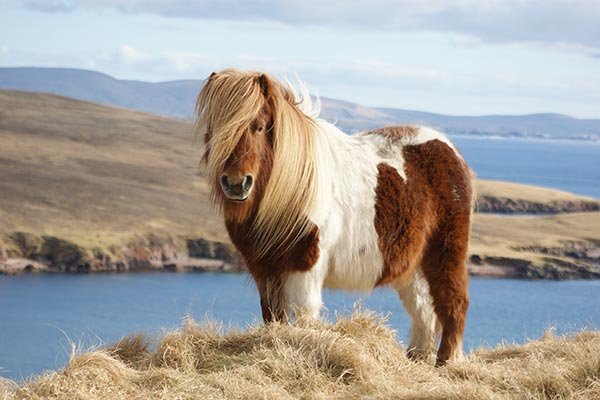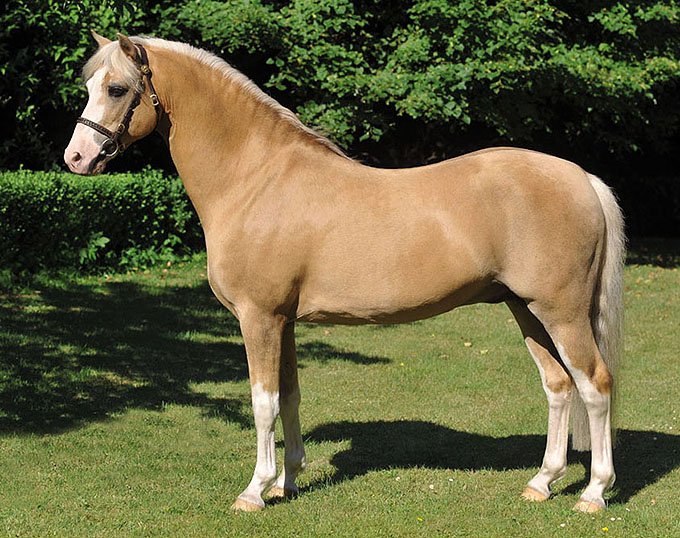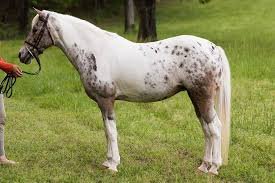Ponies have long been beloved for their manageable size, resilience, and intelligence, making them ideal companions for riders of all ages, especially young and beginner riders. Unlike larger horses, ponies’ approachable stature and calm demeanor make them easy to handle, while their strength and adaptability enable them to excel in various riding activities. From trail riding to competitive sports, ponies offer charm, durability, and versatility in the equestrian world.
The Origins, Unique Traits of Riding Ponies
Ponies originated in rugged regions of Northern Europe and Asia, where they developed sturdy, compact bodies well-suited to harsh climates and limited resources. Early ponies were prized for their strength and endurance, becoming essential for agriculture and transportation during the Middle Ages. By the 19th century, as leisure riding became popular, ponies transitioned from work animals to recreational mounts.
Today, ponies are celebrated for their compact build, which provides stability—particularly beneficial for young and beginner riders. Known for their strength and durability, they can carry substantial weight for their size, as highlighted in this guide on weight-carrying. Additionally, their calm, intelligent temperament makes them reliable partners for both leisurely rides and competitive events, offering safety and personality in one package.
The Origins, Unique Traits of Riding Ponies
Some pony breeds stand out for their versatility and suitability as riding companions, each bringing unique qualities to meet diverse rider needs:
Shetland Pony:

Sturdy and resilient, ideal for young children due to their small size and calm nature.
Why perfect for riding
- Perfect Size for Young Riders: Their small stature makes Shetlands ideal for children to mount, dismount, and handle comfortably.
- Incredible Strength: Despite their size, Shetlands are strong and sturdy, capable of carrying young riders with ease and stability.
- Hardy and Resilient: Originating from rugged environments, they are exceptionally durable and can handle various terrains and weather conditions, making them reliable for trail riding.
- Calm Temperament: Shetlands are known for their gentle and patient nature, especially with well-trained ponies, making them safe and enjoyable for beginner riders.
- Loyal Companions: They form strong bonds with their riders and handlers, which can build trust and confidence in young equestrians.
- Easy to Care For: Shetlands are low-maintenance, hardy, and require less food than larger horses, making them more accessible for beginner owners.
Welsh Pony:

Agile and versatile, suitable for both pleasure riding and competitive events like jumping and dressage.
Why perfect for riding
- Versatile Size: Welsh ponies come in various sizes, suitable for kids and adults.
- Agile and Athletic:They excel in jumping, dressage, and other equestrian sports.
- Easy to Train: Intelligent and quick learners, ideal for riders at any level.
- Friendly Personality: Known for their gentle, engaging nature, they bond well with riders.
- Great Stamina: Hardy and resilient, they handle long rides and rough terrains.
- Elegant Look: Known for their beautiful build, expressive eyes, and flowing manes.
Connemara Pony:

Athletic and strong, excellent for older children and adults interested in eventing.
Why perfect for riding
- Perfect Size for All Ages: Connemaras are sturdy and slightly larger, making them suitable for children, teens, and even adults.
- Strong and Athletic: Known for their jumping ability and agility, they excel in eventing, show jumping, and cross-country.
- Endurance and Stamina: Bred in rugged Irish landscapes, they’re resilient and can handle long, challenging rides.
- Intelligent and Easy to Train: Quick learners with a cooperative nature, making them great for riders of all levels.
- Gentle and Loyal: Connemaras are known for their kind, calm disposition, creating a trustworthy bond with riders.
Pony of the Americas (POA):

Friendly and versatile, suitable for both Western and English riding, especially for young riders.
Why perfect for riding
- Ideal for Young Riders: POAs are the perfect size for children, making them approachable and easy to handle.
- Versatile and Athletic: Known for excelling in both Western and English riding styles, they’re great for activities like trail riding, jumping, and pleasure riding.
- Friendly and Willing Nature: POAs are gentle and cooperative, forming strong bonds with young riders and boosting confidence.
- Distinctive Look: With unique Appaloosa-style coat patterns, they’re both eye-catching and easy to recognize.
- Hardy and Low-Maintenance: POAs are durable and require minimal care, ideal for beginner owners.
Why Ponies Are Perfect for riding
Ponies’ approachable size and gentle nature make them ideal for young and beginner riders, while their strength and versatility benefit more experienced riders. Here’s how ponies excel across different uses:
- For Beginners and Young Riders: Ponies’ shorter stature simplifies mounting, and their calm demeanor provides a supportive environment for learning. Their resilience and strength help build confidence in new riders.
- Trail Riding: Strong and reliable, ponies handle rugged terrain well, making them ideal for outdoor adventures.
- Competitive Sports:
- Show Jumping: Agile breeds like Welsh and Connemara ponies excel in jumping.
- Dressage: Ponies’ grace and trainability make them ideal for youth dressage.
- Driving and Therapeutic Riding: Breeds like Shetlands perform well in driving events, while ponies’ gentle nature and size make them perfect for equine-assisted therapy.
Ponies’ versatility across these disciplines ensures they remain valuable companions in many equestrian activities, suited to the needs of riders at any level.
Tips for Riding Ponies
Proper training and care are essential to keep ponies healthy, happy, and well-behaved. Key tips include:
- Training: Use clear commands and positive reinforcement to encourage good behavior. Ponies are intelligent but can be stubborn, so consistency and patience are essential. For more on effective training, refer to this step-by-step guide.
- Diet and Health Maintenance: Ponies require a balanced diet with quality forage, as they’re prone to weight gain. Routine hoof trims and annual dental checkups are also crucial.
- Exercise and Grooming: Regular physical activity and mental stimulation help prevent boredom, while grooming maintains coat health and allows for monitoring injuries. Learning to understand a horse’s body language can also improve care, as explained in this body language guide.
- Social Interaction: Ponies benefit from companionship with other ponies or horses, promoting mental well-being.
With the right care, ponies remain reliable, happy companions for riders of all ages.
FAQs
Are ponies suitable for adult riders?
Yes, larger breeds like the Connemara can comfortably carry adults, especially on trail rides.
What’s the difference between ponies and miniature horses?
Ponies are sturdy, small breeds suited for riding, while miniature horses are bred as scaled-down versions of full-sized horses, often kept as pets.
Are ponies harder to train than horses?
Ponies are intelligent but may be stubborn. Consistent, patient training is effective.
Which breeds are best for children?
Breeds like Shetland, Welsh, and POA are ideal for children due to their manageable size and friendly nature.
Conclusion:
Ponies continue to be cherished for their approachable size, strength, and adaptability. Suitable for riders of all experience levels, they bring safety, reliability, and charm to activities from casual trail rides to competitive sports. With their unique combination of traits, ponies are treasured companions in the equestrian world, loved by riders across generations.

